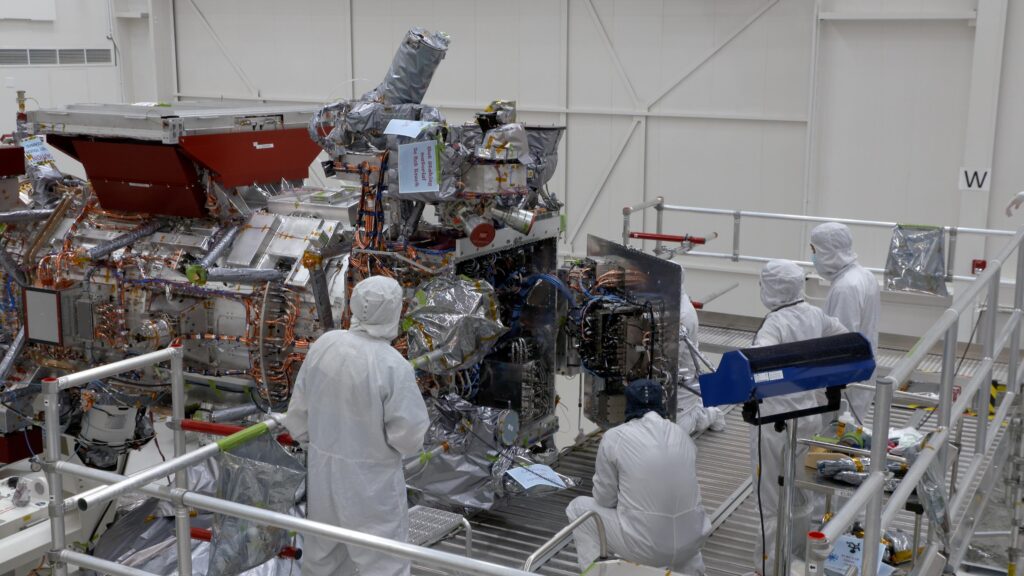NASA specialists installed the last part of the Europa Clipper’s “armor”, sealing its vault. It is designed to protect on-board electronics from radiation.

Europa Clipper is designed to explore Europa, a moon of Jupiter covered with a thick ice shell under which a huge ocean hides. Many scientists believe that it can support life.
However, not everything is so simple. The fact is that Jupiter has a giant magnetic field. It is 20 thousand times stronger than the Earth’s and spins rapidly in accordance with the 10-hour rotation period of the planet. This field captures and accelerates charged particles from outer space, creating powerful radiation belts.
Mission designers cannot ignore the radiation factor. Europa’s orbit passes through one of the gas giant’s radiation belts, which is why its surface is subjected to intense exposure to charged particles. Because of it, the orbit has acquired a characteristic reddish-brown color. According to experts, the radiation level on the surface of Europa is 540 rem per day, which is close to a lethal dose for humans.
Therefore, Europa Clipper will not enter a permanent orbit around Europa. Instead, the spacecraft will be in a wider orbit around Jupiter and from time to time approach the moon, which will minimize its time spent in radiation belts.
But just one orbit is not enough to protect the Europa Clipper from radiation. Therefore, engineers equipped the spacecraft with a vault facility. All its vital electronics will be placed in it. It is an aluminum container with a wall thickness of one centimeter. The vault will reduce the radiation level to an acceptable level.
At the moment, the launch of the Europa Clipper mission is scheduled for October 2024. The spacecraft will have to reach its goal in the summer of 2030.
Earlier, we talked about how the James Webb Telescope noticed a leak of carbon dioxide from under the surface of Europa.
According to https://www.jpl.nasa.gov
Follow us on Twitter to get the most interesting space news in time
https://twitter.com/ust_magazine
